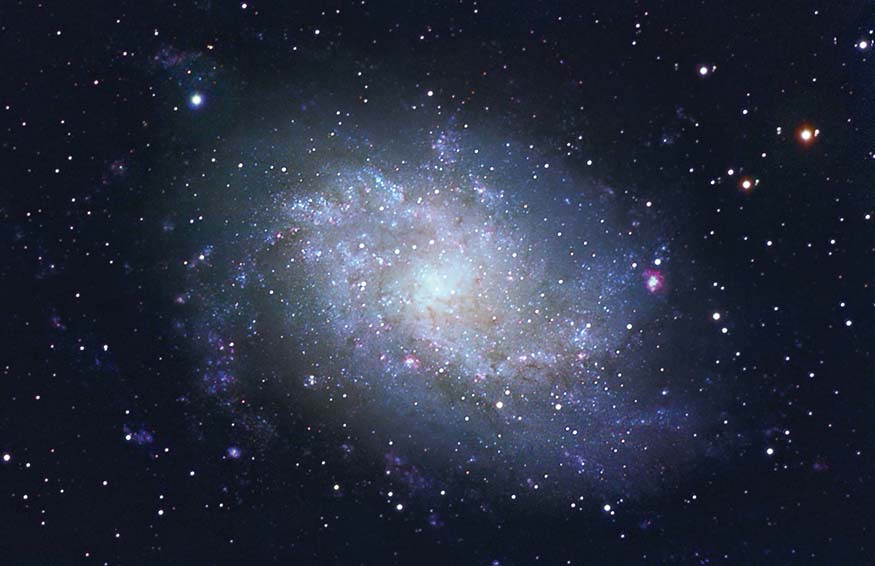
BEAUTY: 
BRAGGING RIGHTS: A beautiful sight
HOW EASY IS IT TO SEE? Best with binoculars or small telescope
BEST TIME TO SEE IT: Fall (in Triangulum)
TYPE: Galaxy
DISCOVERED: 1764 by Charles Messier
When Charles Messier discovered Messier 33, he had no idea how far away it was. Today, we know it is almost 3 million light-years away. It’s a discovery due, almost entirely, to the persistence and skills of a woman named Henrietta Leavitt.
Imagine I placed a 100-watt lightbulb some unknown distance away from you. Could you figure out how far away it is without moving? Sure! First you’d measure the light of a 100-watt lightbulb at a known distance—let’s say 10 feet. Then, you would compare the light of the unknown bulb to your “standard.” Using some basic algebra—light decreases with the square of the distance—you can calculate the distance to the unknown lightbulb. Until Henrietta Leavitt, however, we did not know of any “standard lights” in the universe. Leavitt was born in an era when women were not supposed to be scientists. Nevertheless, she persevered and discovered a type of star known as a Cepheid variable. These stars fluctuate in brightness in a well-known pattern. Leavitt discovered that their peak brightness depended on how long it took them to go from dim to bright.
This is like being able to determine the wattage of a bulb by timing how long it takes to reach full brightness. By measuring the distance to nearby Cepheids (via parallax), Leavitt could then calculate the distance to any visible Cepheid anywhere in the universe!
Andromeda’s little sister. Messier 33 is often overshadowed by its much larger and brighter neighbor: the Andromeda Galaxy. You can find M33 easily by finding the Andromeda Galaxy and then scanning down to Beta Andromedae. Keep going on the same line and you’ll run into Messier 33.
Large but faint. If it were concentrated into a point, M33 would be a moderately bright star. Unfortunately, its light is spread out over an area equal to two full moons side by side. Low power, dark skies, and patience are required to see it.
NGC 604. M33 is host to one of the largest star-forming nurseries known. If it were as close to us as the Orion Nebula, it would fill our sky. But at millions of light-years distance, you can see this nebula as a fuzzy star near M33’s nucleus.
ANDROMEDA REGION IN FALL; 30-DEGREE FIELD OF VIEW